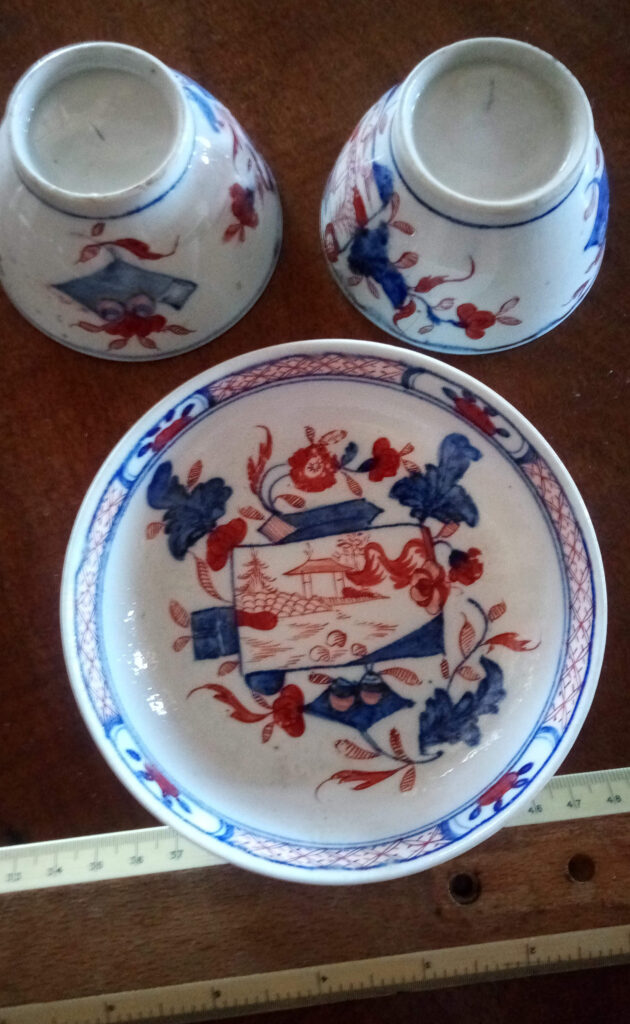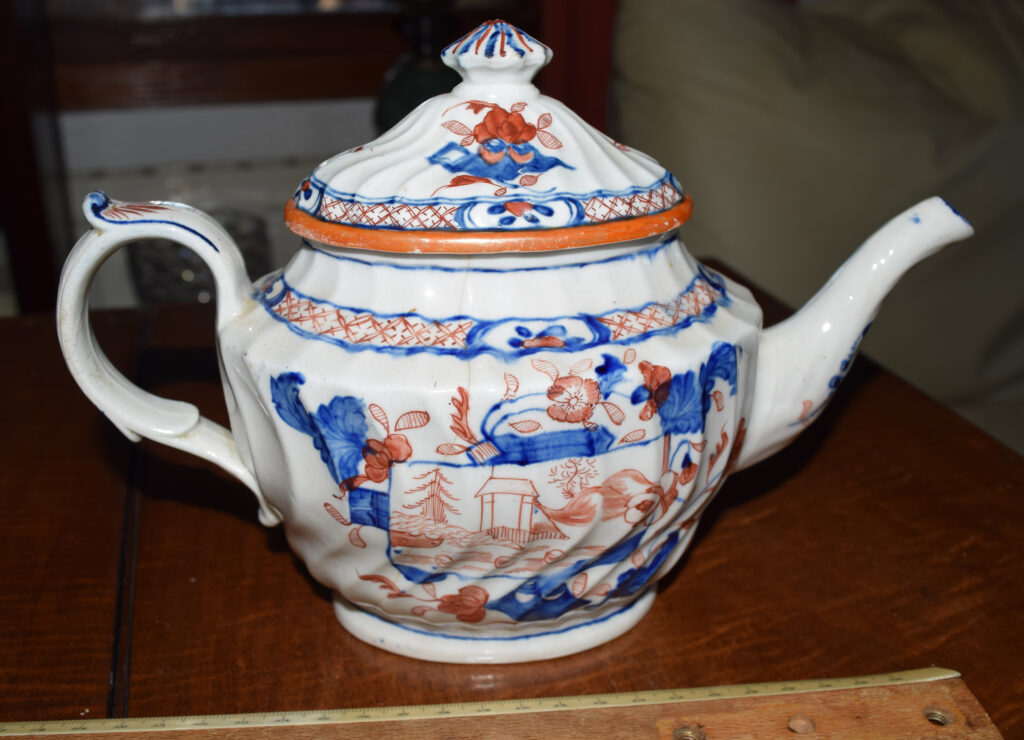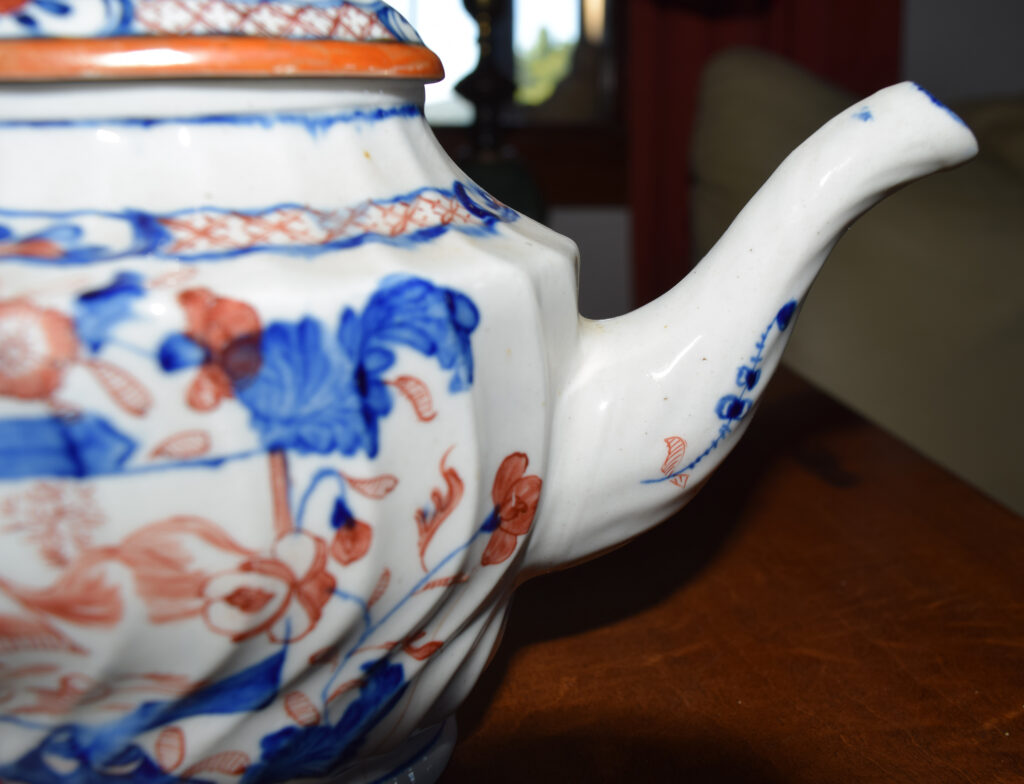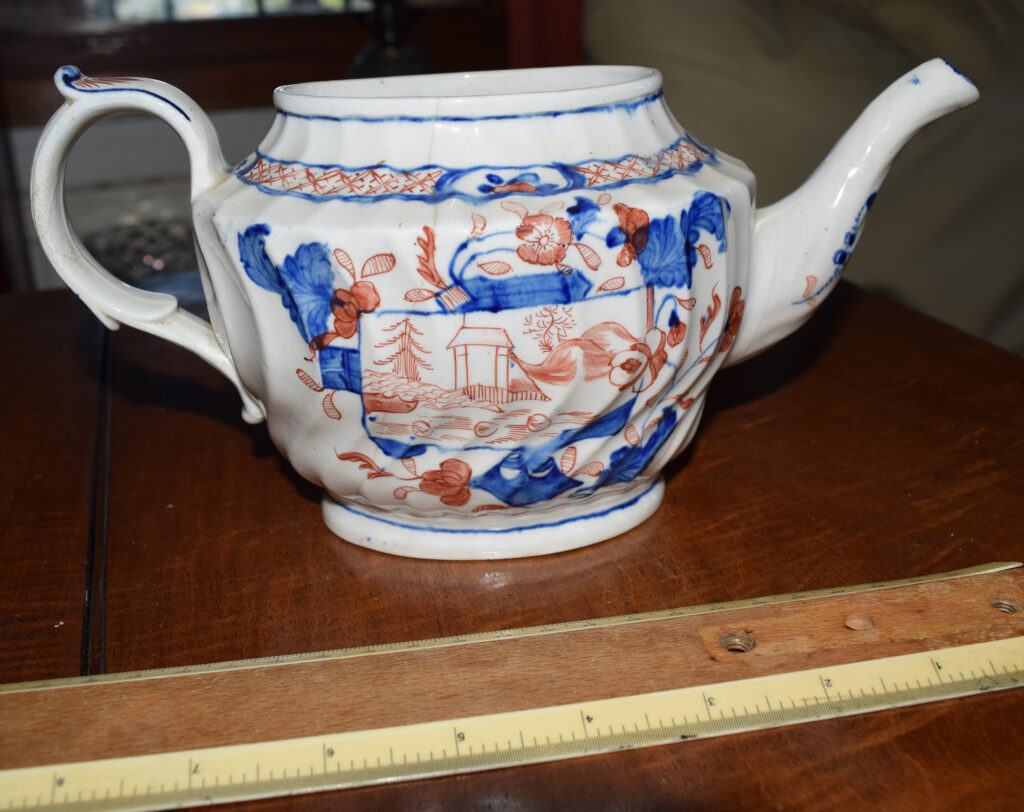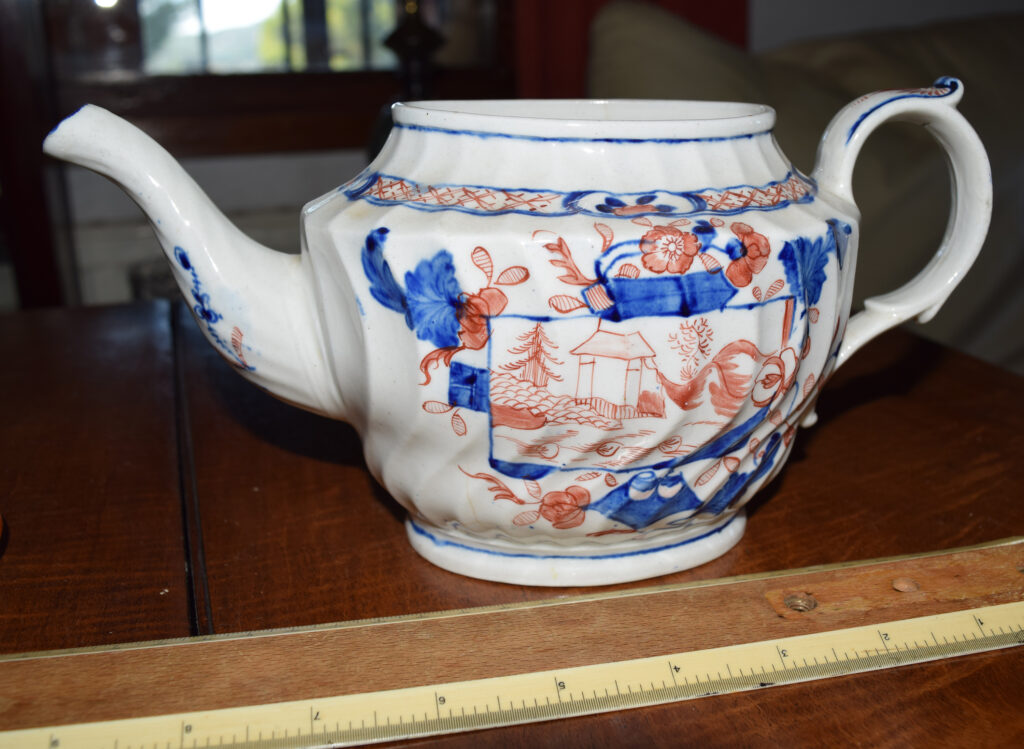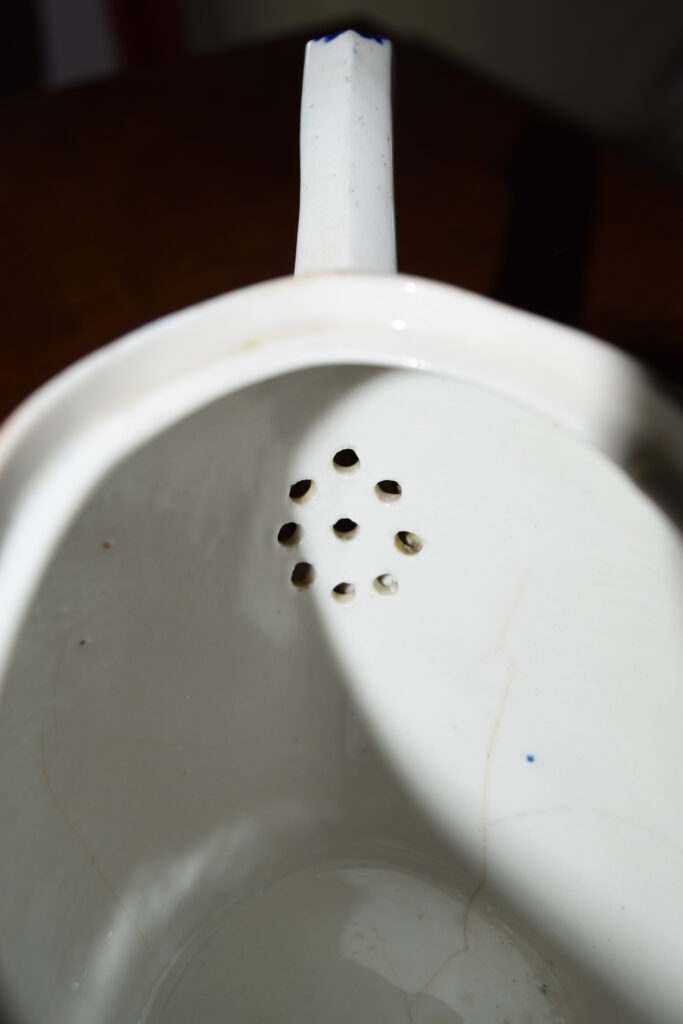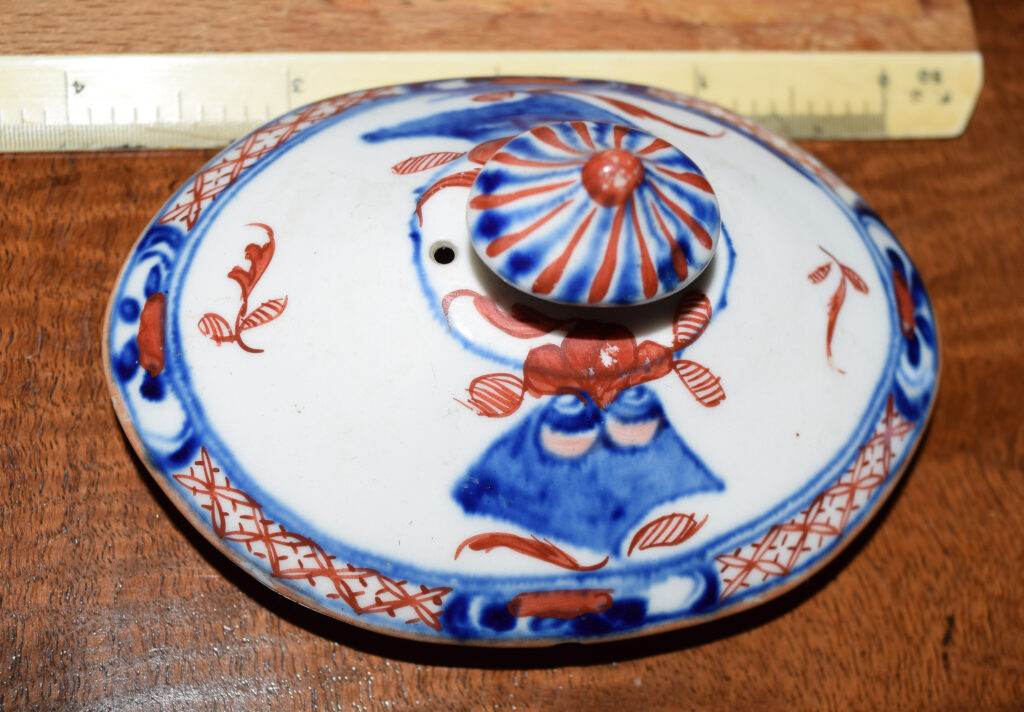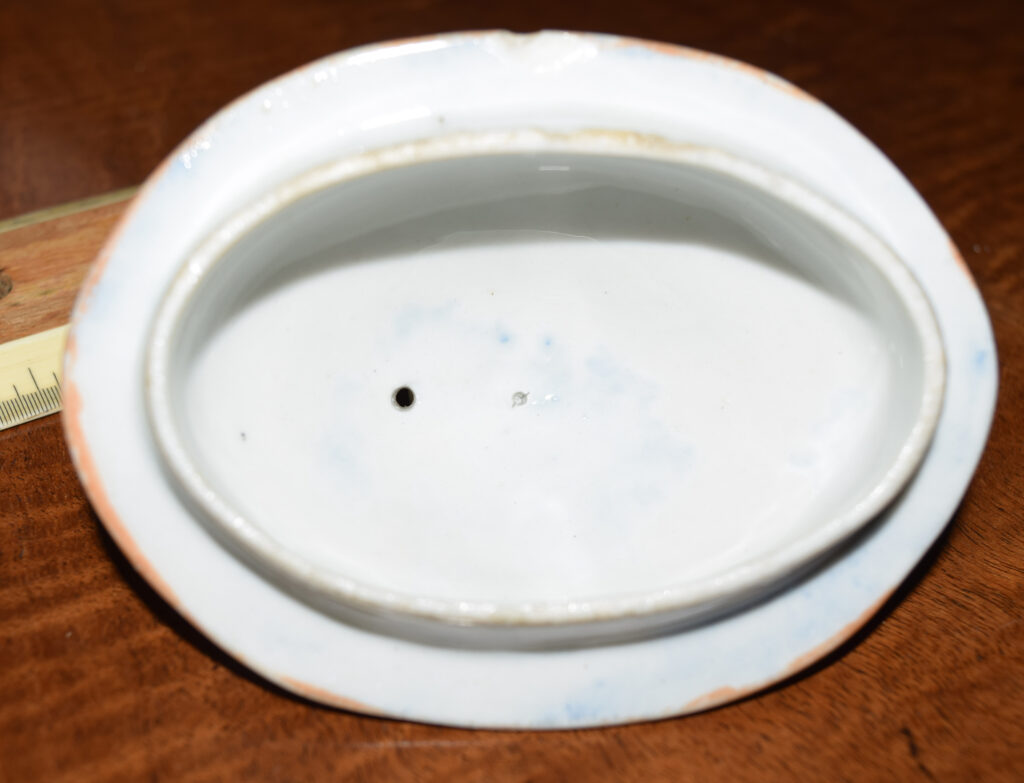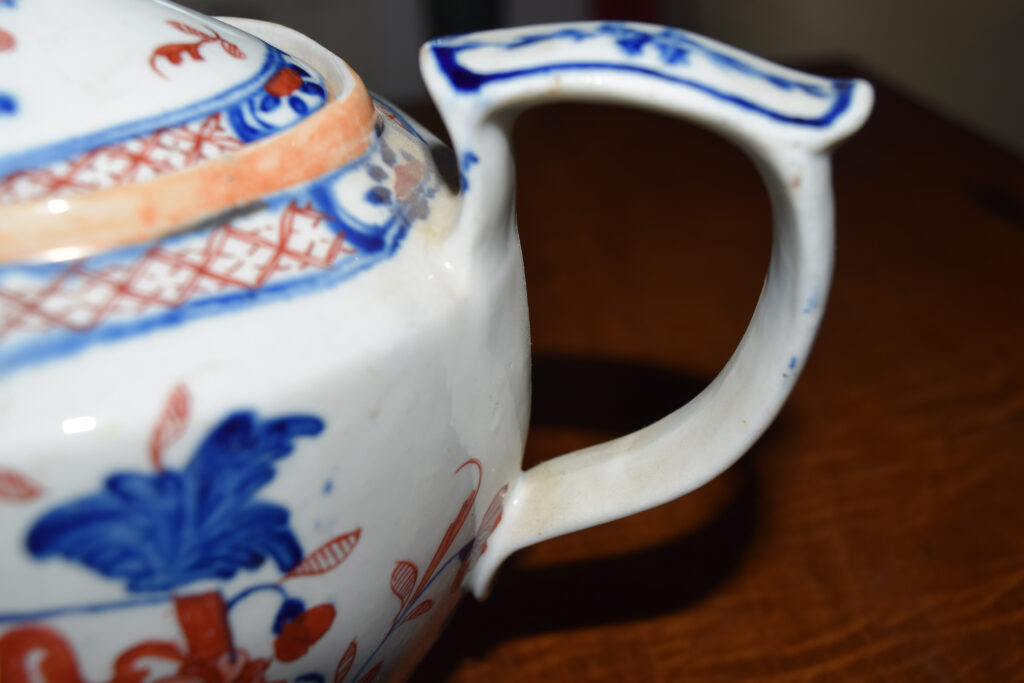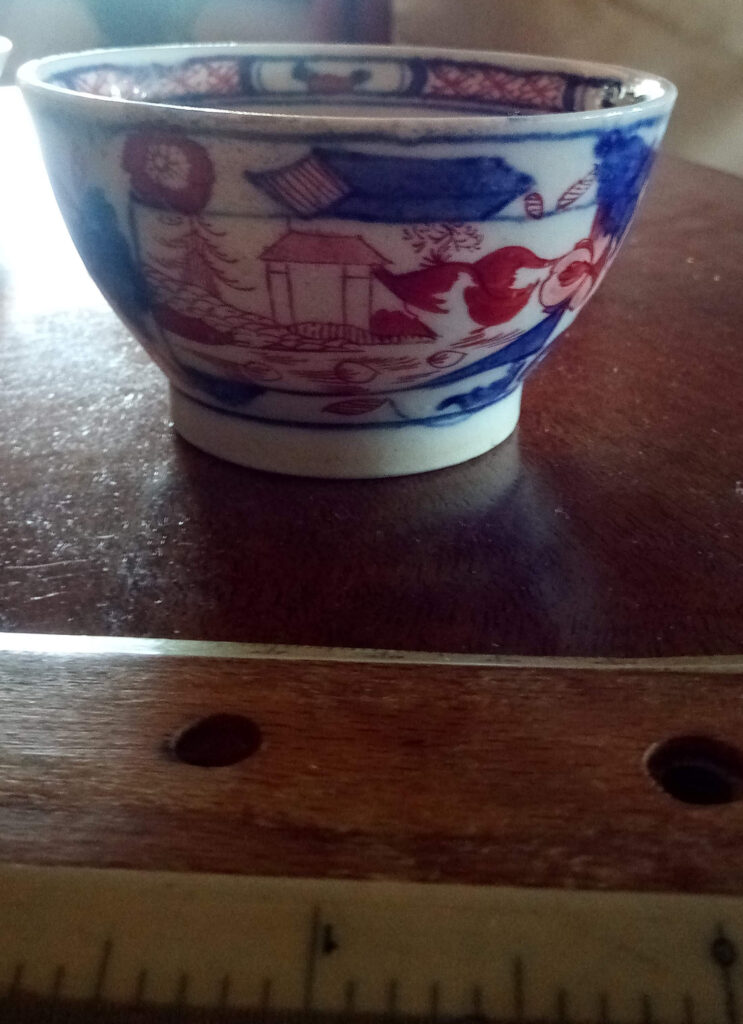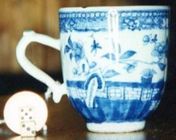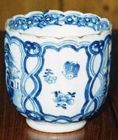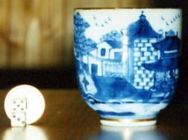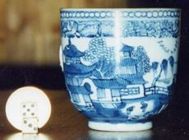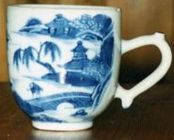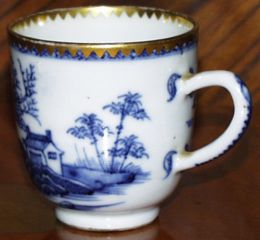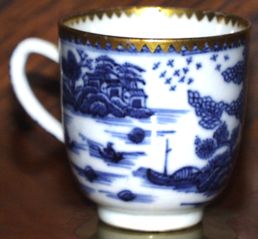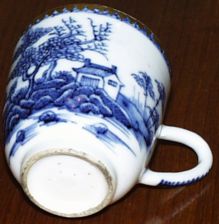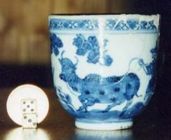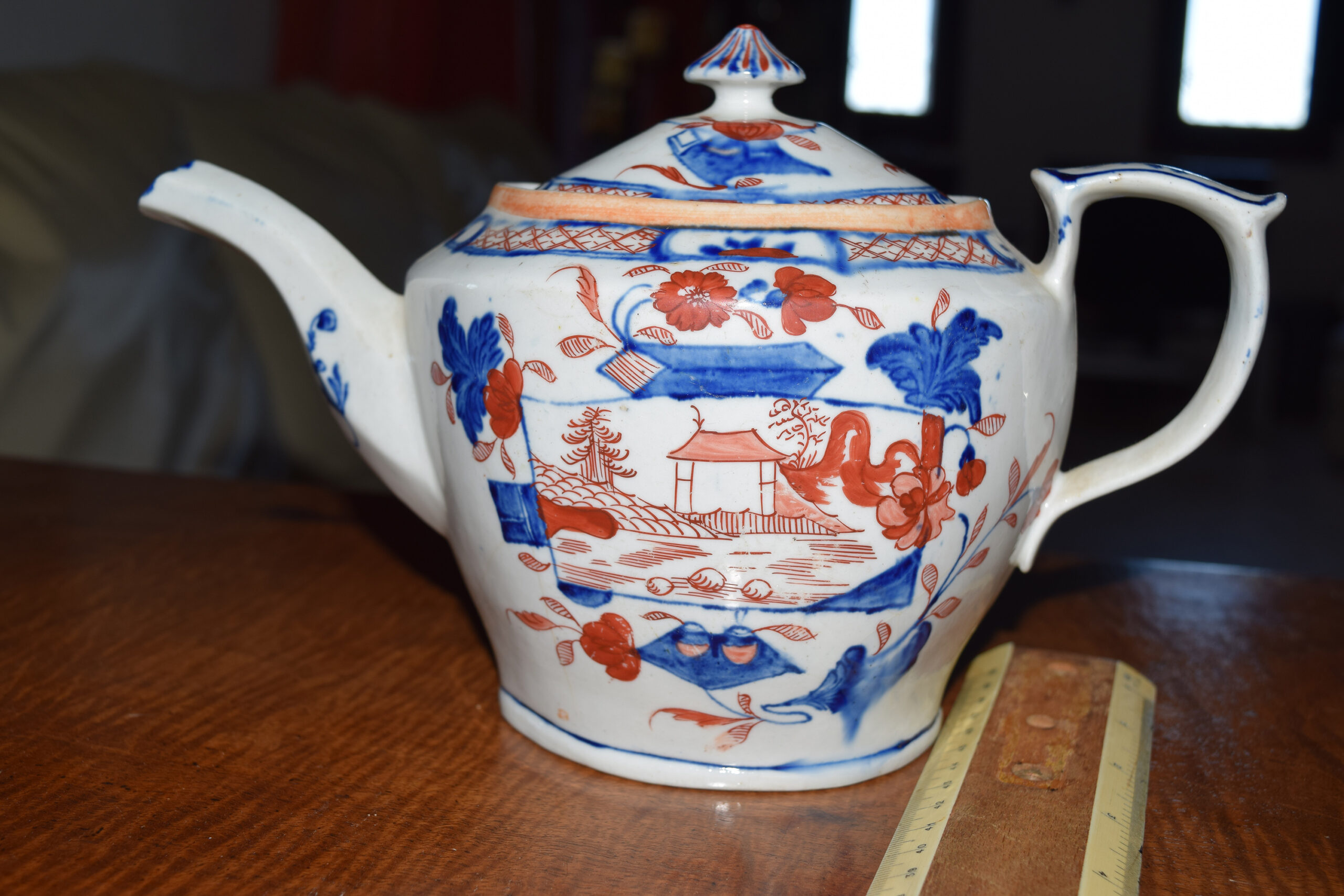 antique
antique
Picture Postcard Pattern
Several factories are known to have used this decoration and research is still continuing – reference pieces include these two teapots.


Both teapots have been under scrutiny from acknowledged experts and both are still the objects of study.
Teapot 1 first appeared in print in Goddens’ Porcelain Maunfacturer’s book (here attributed to Cambrian Pottery, but later put into a “problem” Category as you can see below).


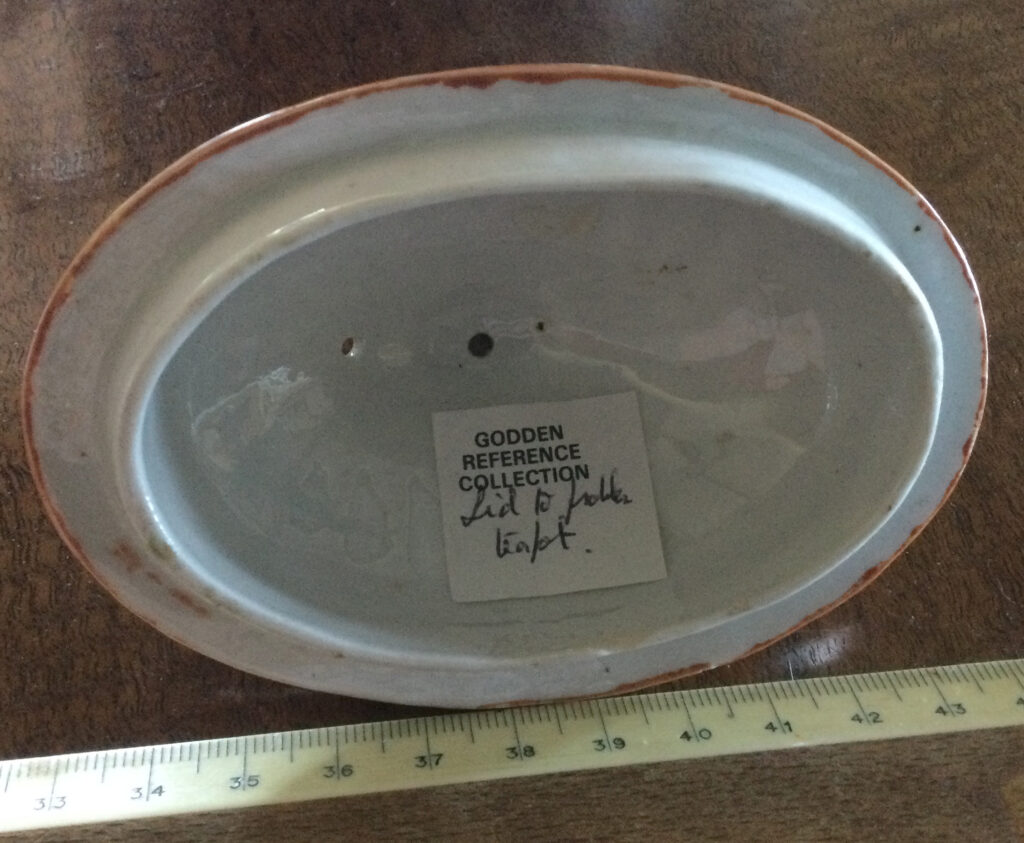
What makes attribution so difficult is, oddly, not the lack of pattern numbers or maker’s marks, though, clearly these don’t help. What makes it hard is the non-conformity of style, paste, design, glaze, shape and pattern between these pieces and other contemporary named pieces.
Current thinking is that Teapot 1 is probably A & E Keeling (formerly known as Factory X). Its hybrid paste and format putting it 1795-1800
Teapot 2 appears in Michael Berthoud’s second Teapot reference book (A Directory of British Teapots) as Plate 608 however the attribution to Turner is speculative and open, still, to debate (especially by at least one Turner collector).
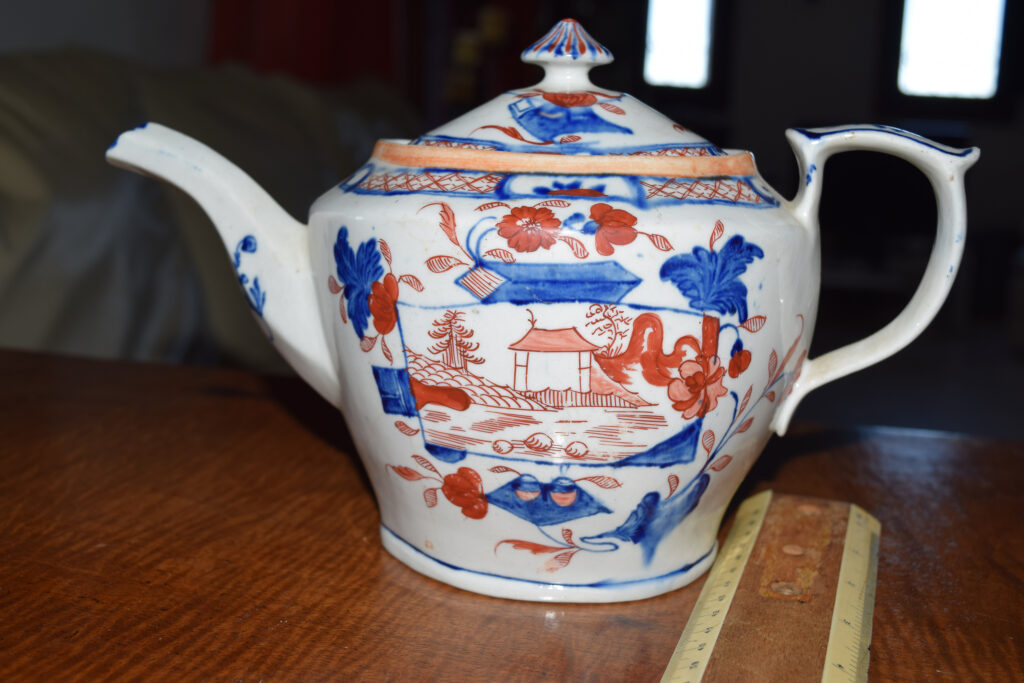

Even more difficult to identify, it has also been suggested that it was an experimental piece of porcelain – certainly no other with this combination of spout and handle is known in hybrid paste. At one point it was mooted that it might be a Haynes experiment involving Rogers – but no corroborative documentation has been found.
My belief is that one of the teabowls and the saucer below may well have been made by the same factory as Teapot 2 (if not decorated by the same decorator).
